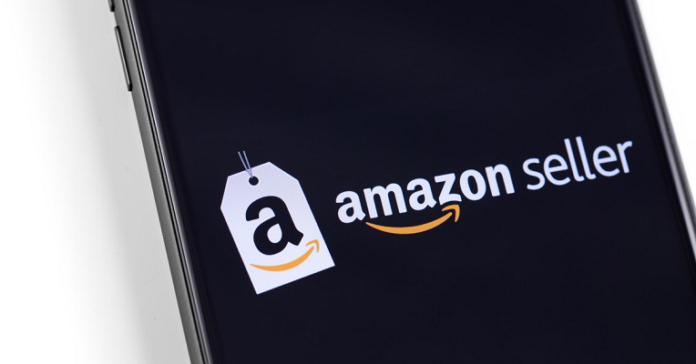Amazon is the modern hub of eCommerce that has altered the customer experience and expectations for buying anything online. There are very few things that don’t have a listing on Amazon, and the competition for any business on Amazon is admittedly fierce. Amazon offers an app to help businesses selling through their website, but there are several third party Amazon seller apps available that can be equally effective.
If your business is struggling with operating profitably through Amazon, there are a few optimizations to make that can increase your profit. Keep in mind that even the best strategies may not work perfectly because Amazon’s larger retailers and brands drive most sales on the site. However, Amazon can be a great way to raise awareness for your products, and if successful, and reduce many of the difficulties associated with eCommerce.
Complete Your Business Profile
Your Amazon business profile can have a subtle impact on your sales and give customers an idea of your brand’s reliability. Upload a high-quality logo to use as a profile picture and add in profile information wherever possible. The information available through your business profile should allow the customer to see reviews, a summary of your brand objectives, and contact information.
You can convert your Amazon business page to a store page to look similar to your business website’s landing pages. Customers can shop by product categories on store pages, which ensures that the customer is not looking at another product side-by-side with yours. There is even an opportunity to include links to your social media channels at the bottom of the page.
Optimize Product Listings
Check and double-check product listings for errors and update information on products whenever possible. Does the listing description answer any potential questions your customers might have? Are the specifics of the product and its uses clearly and consistently outlined? Listing titles and descriptions are essential for allowing customers to decide if the product is well-suited to their needs.
Bundle Products Together
If you are offering a large variety of related products through Amazon, you may want to consider offering product bundles. Group relevant products and offer a slightly discounted rate for the entire bundle so consumers have the option to add more products to their cart with a single click.
Each product will need an individual listing, which means the easiest way to create a bundle product is to use any of the products you already have listed. Product bundles are tempting when they feature a relevant product pairing and can help to increase your sales and profit. You can visit the Amazon Seller Central product bundling policy page for more information on grouped products.
Look for Items that Go Out of Stock Often
The supply and demand for products listed on Amazon can be challenging to predict, which means it’s important to monitor your products for low stock or backorders. Because very few businesses can maintain perfect inventory levels through Amazon-based customer demand, there is often a potential to capitalize when competitors have low supply. Low stock indicates that their product is selling well and that your business may be able to do the same. Select a few competitors to track and provide product solutions for customers interested in the low-stock competitor item.
Use FBA (Fulfilled by Amazon)
Amazon’s FBA program to have Amazon pick, pack, and ship your products. Through the FBA program, Amazon will store your products in one of its warehouses, so your products are easily accessible to customers with two or one-day shipping. This can save your eCommerce business a lot of time, which in turn has the potential to save you money moving forward. Amazon will also manage any returns on your behalf, which helps reduce concerns surrounding return shipping and handling.
Monitor Changes in Supplier Prices
Supplier prices have changed rapidly with the pandemic and can be difficult to predict due to labor shortages. Now more than ever, it is essential to track changes in supplier prices and monitor how much it costs your business to manufacture, list, and sell through all eCommerce sites, not just Amazon.
Manage Your Reputation
Customer reviews for your product are the #1 for new customers to determine the quality of your product before purchasing. This means that bad reviews can have an extended negative impact on your business’s profit through Amazon and can drive people away from converting. Resolve customer issues and complaints whenever possible, and reply to negative reviews to offer potential solutions that might satisfy customers and lead them to change their reviews. High-ranking and relevant Amazon reviews are always from verified product purchasers, which means they can be a great source of market research, whether the review is one star or five.
Use Sales Tracking Software
There are many tools available, from Amazon or a third party, that can help you track the revenue and profitability of your business’s presence on Amazon. Many Amazon eCommerce software and smartphone apps can help you restock your products and alter your product prices to stay competitive and keep up with changes in market rates. The competitive edge available through these software services is one of the best ways to increase the profitability of your Amazon listings.
Conclusion– The 8 Keys to Maximizing Profit Through Amazon
The sales landscape on Amazon is constantly changing and can be challenging to keep up with, even if your business is running optimally through other sites. Amazon gives consumers an extended range of products, which can sometimes result in your products getting lost in the mix. Thankfully, there are many steps you can take to keep up. Use Amazon tracking software, sign up for the business FBA program, optimize listings, bundle products together when able. These tactics will help you develop the recipe for Amazon success that will ultimately help grow your business.








